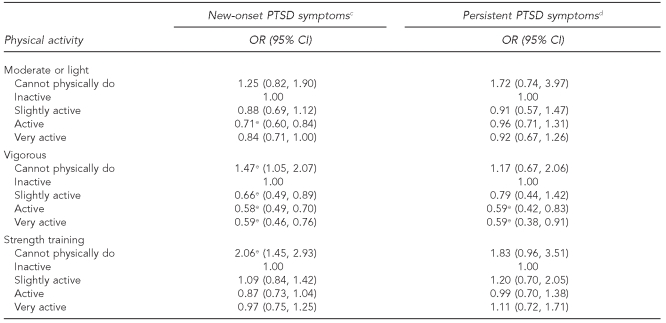Table 4.
Adjusted oddsa of new-onset and persistent PTSD symptomsb by physical activity level among Millennium Cohort Study participants, 2001–2006
aAdjusted for all physical activity variables, gender, birth year, education, marital status, race/ethnicity, body mass index, smoking status, problem alcohol drinking, prior PTSD diagnosis, deployment status, separation from military, military rank, service component, branch of service, and occupation.
bPTSD symptoms are based on the Patient Checklist-Civilian Version using the Diagnostic and Statistical Manual of Mental Disorders, 4th edition, criteria.
cThose with new-onset PTSD symptoms were compared with those with no PTSD symptoms.
dThose with persistent PTSD symptoms were compared with those with resolved PTSD symptoms.
ep<0.05
PTSD = posttraumatic stress disorder
OR = odds ratio
CI = confidence interval

